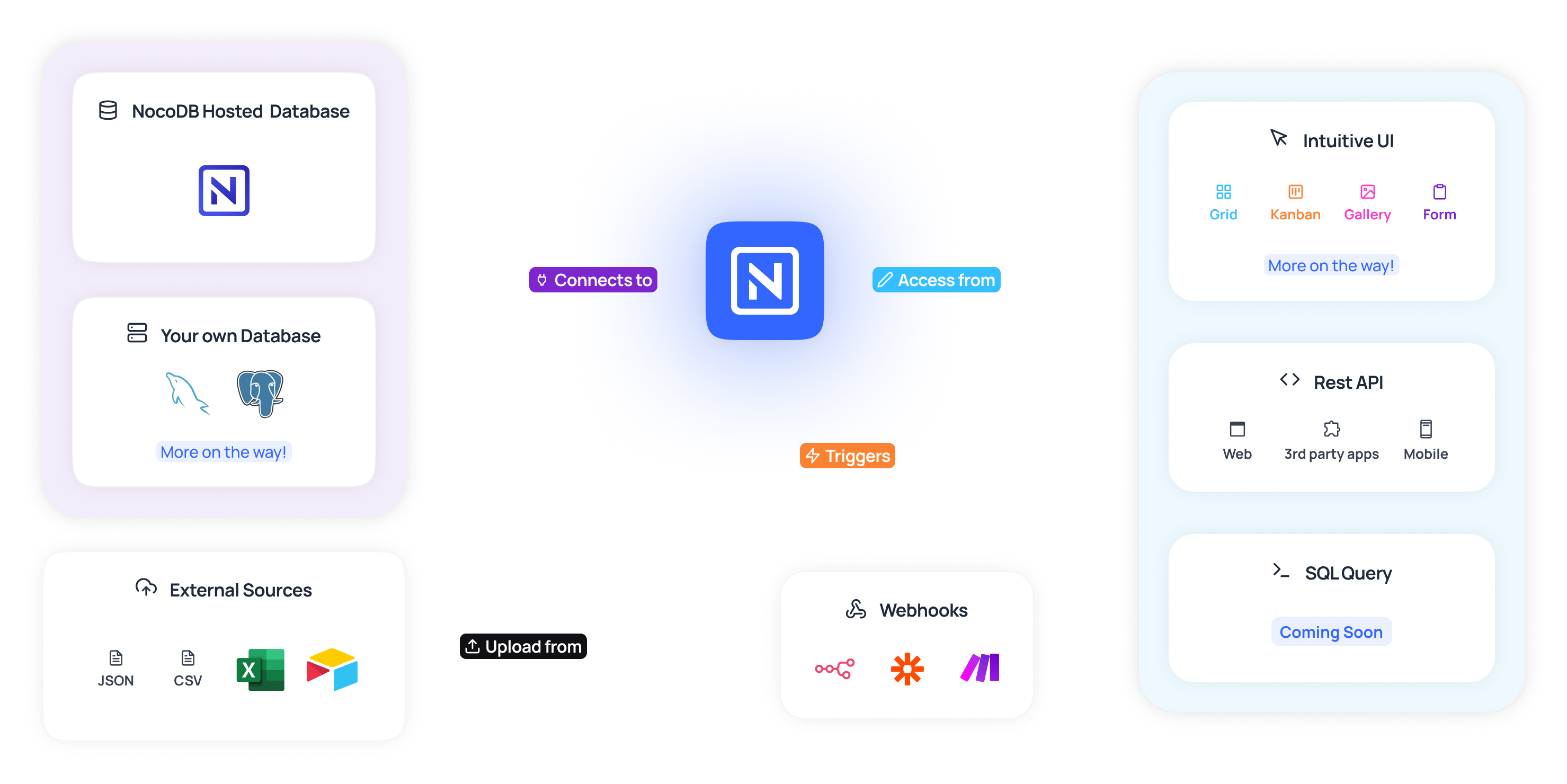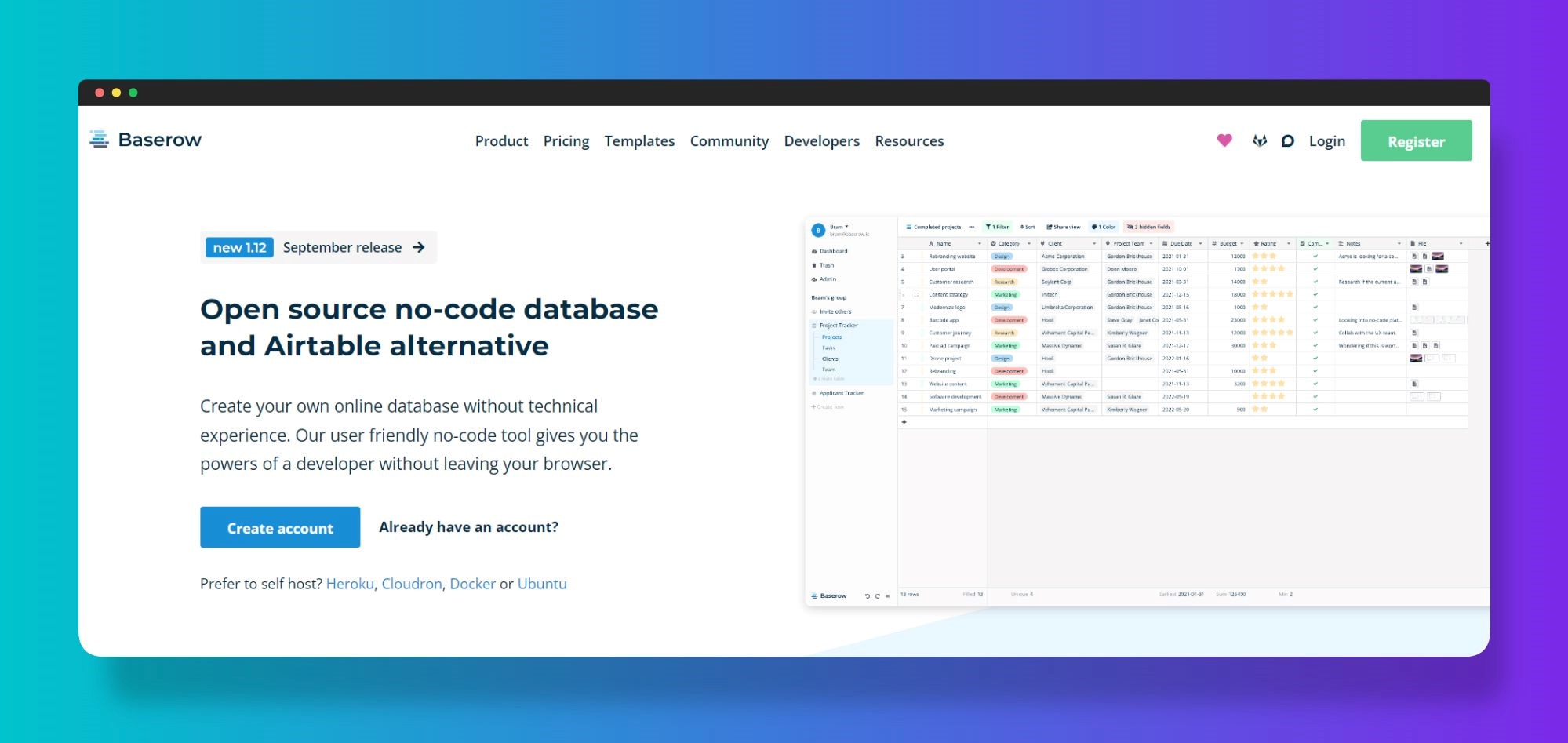No-Code Open System Data Source Creation: Simplify Complicated Growth Tasks
No-Code Open System Data Source Creation: Simplify Complicated Growth Tasks
Blog Article
Checking Out the Advantages of Scalable Data Sources That Require No Coding Abilities for Reliable Information Monitoring Solutions
The introduction of scalable data sources that get rid of the necessity for coding skills offers a transformative possibility for organizations seeking efficient data management services. As we take into consideration the implications of such innovations, it becomes critical to examine exactly how they can improve the landscape of data administration and drive lasting development in a competitive atmosphere.
Boosted Ease Of Access for Users
Improved availability for individuals is a critical element of scalable databases, ensuring that data management systems are user-friendly and user-friendly. In a period where data-driven choices are critical, accessibility allows a wider array of customers, consisting of those without extensive technological proficiency, to involve with database systems effectively. This democratization of information gain access to promotes boosted cooperation across departments, encouraging employees to make and remove understandings informed decisions.
Easy to use interfaces, such as visual data and drag-and-drop attributes representation, simplify complicated data interactions. These enhancements minimize the knowing curve linked with typical data source administration, allowing customers to concentrate on leveraging data instead than facing technological intricacies. In addition, scalable databases commonly incorporate personalized control panels and real-time analytics, giving individuals with immediate understandings customized to their specific needs.

Cost-Effectiveness and Source Financial Savings
Reliable information management not only depends upon access however also on cost-effectiveness and resource savings. Scalable databases made for customers with no coding abilities dramatically reduce financial concerns usually related to standard database administration systems. By getting rid of the demand for specialized shows proficiency, companies can designate their resources much more efficiently, concentrating funds on core organization activities instead than comprehensive training or employing competent employees.
Furthermore, these data sources frequently make use of cloud-based options, which better minimize costs associated with hardware and upkeep. Organizations can scale their database services according to their demands, avoiding the costs sustained from over-provisioning sources. This versatility indicates companies can adjust to altering demands without sustaining unnecessary expenses, leading to significant lasting financial savings.
Additionally, easy to use interfaces improve data access and administration processes, lowering the time invested on administrative jobs. This performance converts into labor cost savings, allowing groups to focus on calculated initiatives as opposed to regular upkeep. Generally, adopting scalable data sources that require no coding abilities cultivates a more affordable technique to data administration, making it possible for organizations to optimize their sources while maintaining high levels of operational efficiency.
Improved Cooperation Across Teams

Additionally, scalable databases promote smooth interaction among employee. With user-friendly user interfaces that need no coding skills, employees can conveniently develop, modify, and share records or dashboards customized to their certain demands. This democratization of data empowers non-technical users to add insights, enhancing the collaborative atmosphere.
In addition, these data sources support concurrent access, allowing numerous customers to deal with the very same dataset all at once. This feature improves efficiency, as groups can participate in joint information evaluation without the threat of version control concerns. The ability to leave notes or comments directly within the data source additionally promotes discussion and clarifies information interpretations.
Streamlined Information Monitoring Processes
In today's data-driven setting, companies identify the need of structured data management refines to optimize performance and accuracy. By leveraging scalable databases that call for no coding skills, organizations can simplify their information handling and lower the intricacies typically linked with traditional data source systems. This accessibility equips non-technical individuals to engage straight with information, promoting quicker decision-making and reducing dependence on specialized IT personnel.
Structured data administration processes enhance workflow by automating routine jobs such as data entry, recognition, and reporting. Automated data assimilation ensures that details from various sources is aggregated effortlessly, eliminating silos and promoting a merged view of vital service metrics (no-code). Furthermore, easy to use user interfaces permit personnel to control information conveniently, allowing them to create understandings that drive tactical initiatives without the need for considerable training.
This performance not only increases functional processes however additionally minimizes the capacity for human mistake, ensuring that data stays exact and reputable. Ultimately, streamlined information monitoring processes with scalable databases cause boosted productivity, allowing organizations to concentrate on core tasks while making certain that their information management practices are efficient and effective.
Scalability for Growing Businesses

For broadening enterprises, the ability to scale up or down is crucial. A scalable data source can take care of an increase of data generated basics from brand-new clients, products, or services, making certain that organization procedures stay continuous. Furthermore, these databases provide the capacity to take care of peak lots successfully, which is vital during periods of quick growth or seasonal spikes.
Additionally, several scalable data source services are designed with user-friendly interfaces that need no coding skills, empowering non-technical staff to take care of information efficiently (no-code). This democratization of information monitoring allows organizations to allocate sources strategically and decrease dependence on specialized IT workers
Ultimately, adopting a scalable data source not only boosts operational performance yet also promotes an atmosphere where services can innovate and develop without the constraints of standard data source systems. This adaptability settings companies for lasting success in today's affordable landscape.
Conclusion
In final thought, scalable databases that need no coding skills offer significant advantages for efficient information monitoring. By simplifying information monitoring procedures and using scalability for growing companies, such services enable organizations to adjust to transforming needs successfully.
Improved availability for individuals is a critical facet of scalable data sources, making sure that data management systems are straightforward and user-friendly.Easy to use interfaces, such as aesthetic information and drag-and-drop attributes depiction, simplify complex information communications. Overall, adopting scalable data sources that need no coding skills fosters an extra cost-efficient technique to data administration, enabling companies to maximize their resources while maintaining high degrees of operational efficiency.
By leveraging scalable databases that call for no coding abilities, companies can simplify their information handling and reduce the intricacies normally associated with typical database systems - no-code.Streamlined information management procedures improve process by automating regular jobs such as data access, validation, and coverage
Report this page